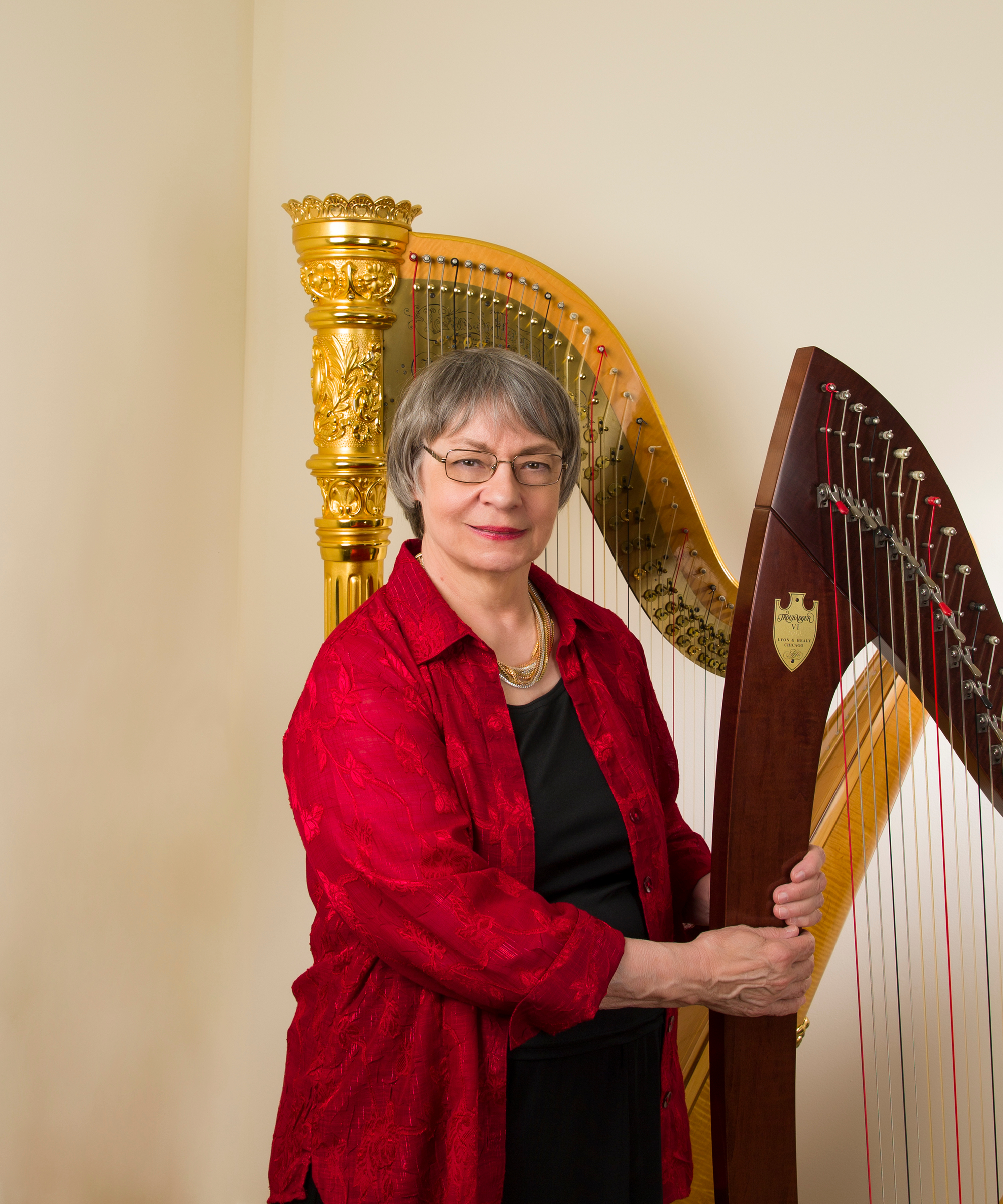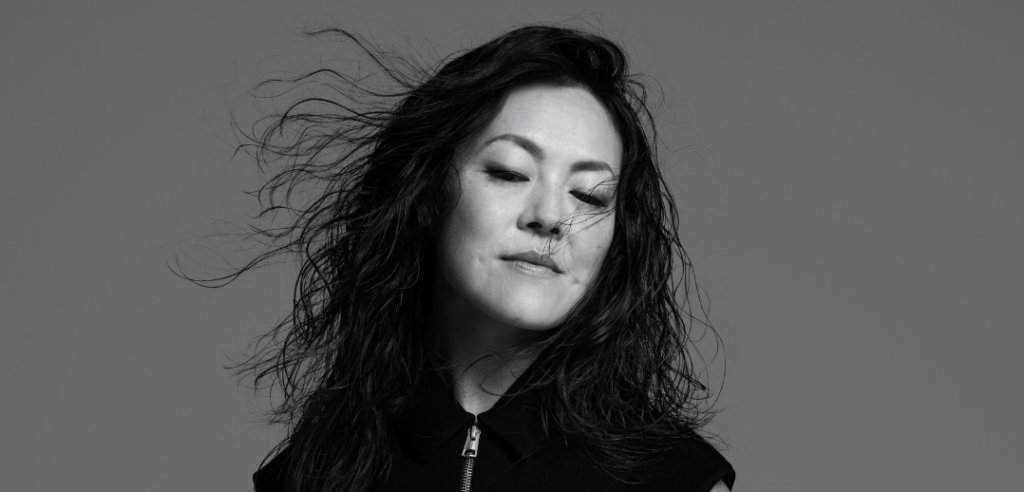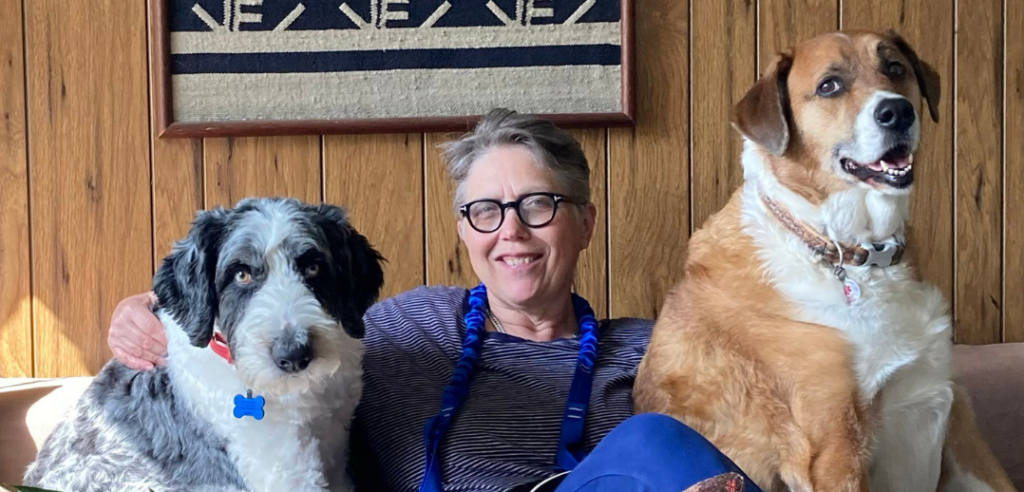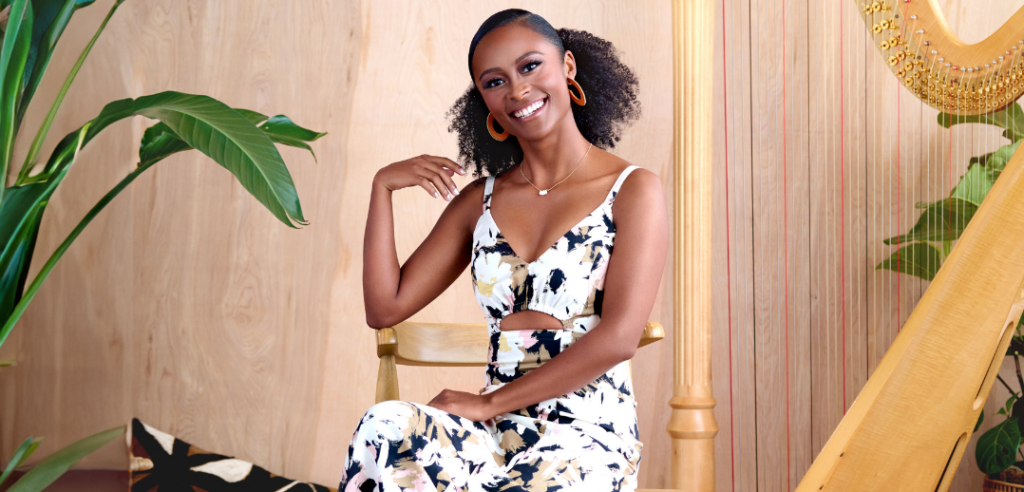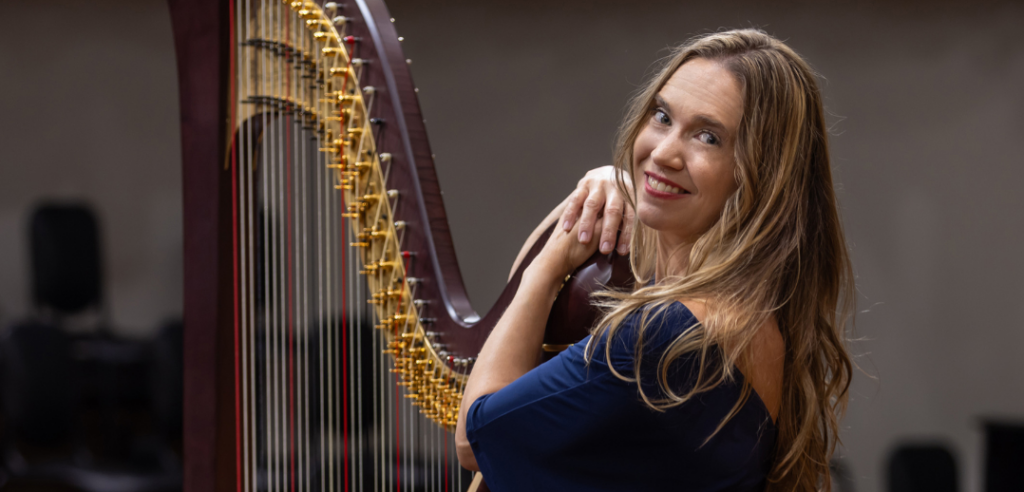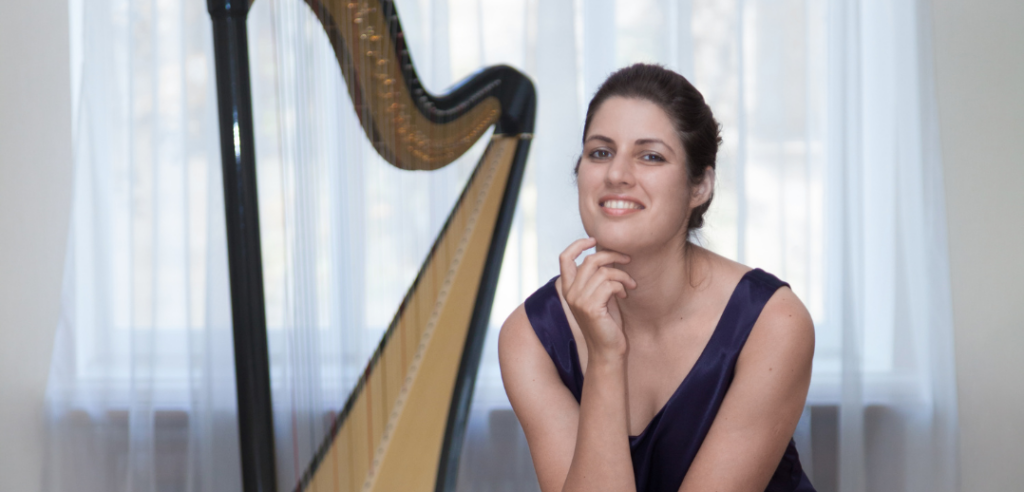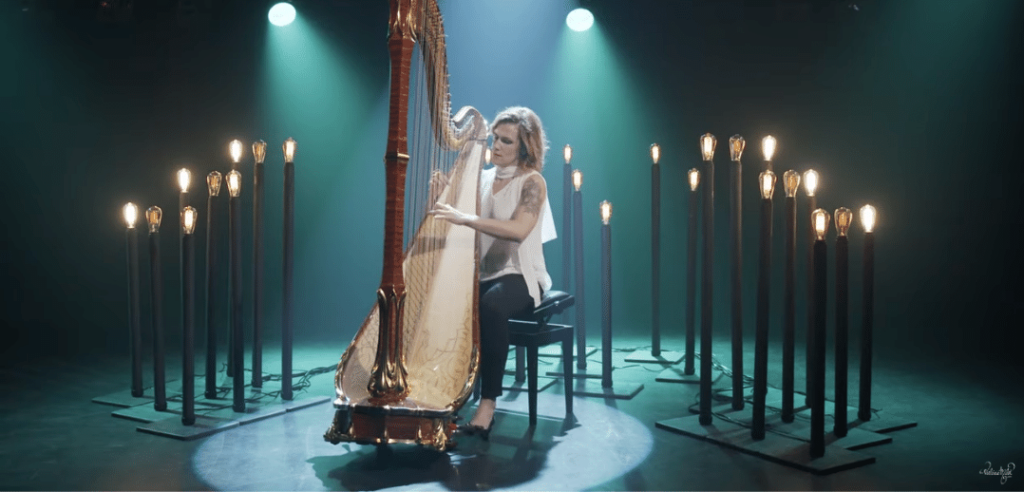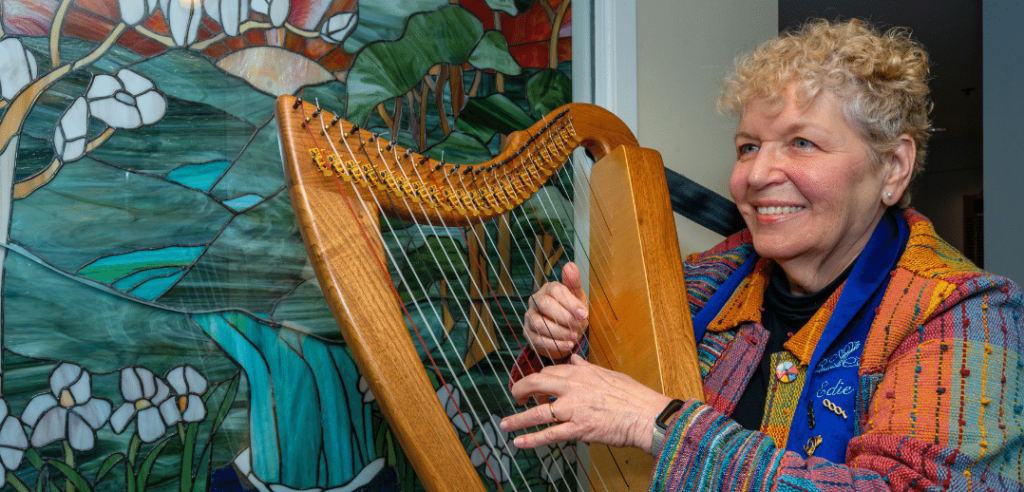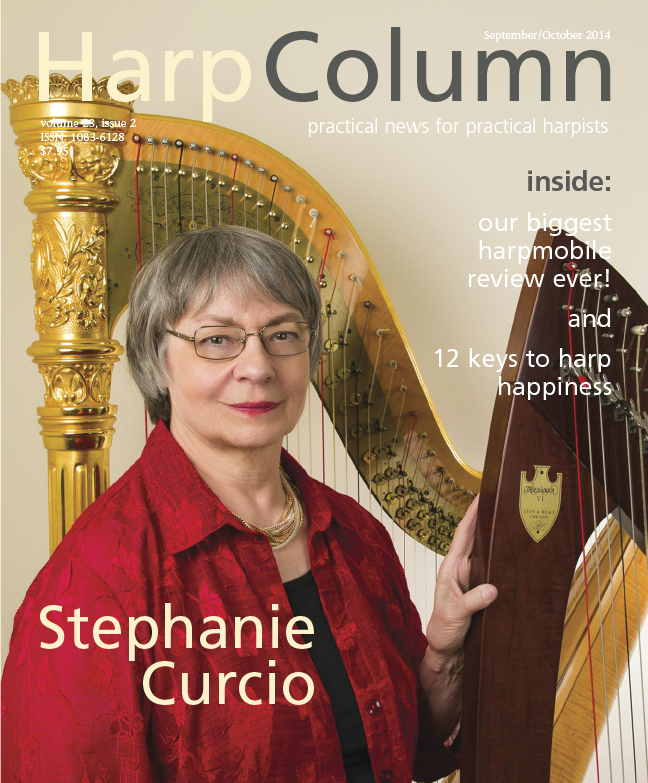Stephanie Curcio reflects on a career of teaching and learning about human behavior.
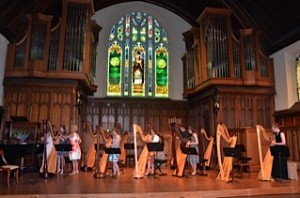
Former students prepare to perform during Stephanie Curcio’s retirement retrospective.event in Exeter, N.H., in June 2014.
A waiting list is something you usually encounter at a trendy new restaurant or prestigious preschool or maybe the hot new yoga studio everyone is talking about. But a waiting list for a harp studio? You don’t often hear of that. A waiting list for a harp studio in rural New Hampshire? More unlikely still. But that’s what we found when my mother contacted Stephanie Curcio about private harp lessons for me.
A native of New York City, Stephanie Curcio entered the High School of Music and Art, now known as the Lincoln Center School for the Arts, as a piano student. It was there that she discovered the harp and began group classes with Beverly Mann, a harpist for the original production of the musical The Fantasticks. Shortly thereafter, she interviewed with Carlos Salzedo and ultimately studied privately with Lucile Lawrence, coaching with Salzedo and later attending his Camden Harp Colony. She continued on to Marymount College, Tarrytown, where she triple-majored in harp, piano, and psychology. She completed a master’s degree in psychology—specifically human learning—at Fordham University.
An expert teacher, Stephanie has routinely worked with talented students from all parts of New England. Having been on faculty at the University of New Hampshire as well as several local preparatory schools, she gradually built a strong reputation. Her pupils have gone on to the finest conservatories in the world, and have consistently won awards, competitions, and other recognition.
A prolific composer and arranger as well, Stephanie is best known for her pedagogical series Student Harpist. In 1989 she began her own publishing company, and has written a vast collection of pieces for beginner and intermediate students.
In June, Stephanie held what she refers to as a “retrospective concert” to mark her “pseudo-retirement.” Current and former students played her music as she detailed her life and career for friends, family, and students. This provided the perfect opportunity for me to sit down with my long-time teacher and give Harp Column readers a glimpse behind the music.
Harp Column: How did you manage to make a full-time career out of teaching? How did you start teaching, and how did you come to devote your full attention towards it?
Stephanie Curcio: Right out of grad school, I was a teacher of special education and things like that, but on the side I always taught a little piano here, a little harp there. When I had children, I wanted to teach so that I could pursue my profession and still be a mother at home. I built up a little studio when we lived in New Jersey, and then I moved to New Hampshire and did the same thing here. I was really the only game in town for a while in New Hampshire. Everywhere I played, people would come up and they would say, “I’ve always wanted to play the harp. Do you teach?” So it gradually built up.
[protection_text]
HC: Do you remember what some of your first lessons were like in contrast to how you teach now—how do you think you’ve changed as a teacher?
SC: Well, I think I started off like any other harpist who was a player and then becomes a teacher, but I also had this wealth of knowledge from my psychology degree about human learning and the progression of human learning. I realized very early in the game that there were no pedagogies for harp. There were plenty for piano, and I knew all of them. So that’s why I started the Student Harpist, and that’s how I changed. I devised a progression of learning [the harp] according to many of the principles of human learning. I have a very holistic approach. I like the student to find the whole picture and then work with that; it works for most people, but not everybody.
HC: So what, in a little more detail, are these principles of psychology that you bring into your lessons?
SC: Well, psychology is basically the study of human learning and human behavior. It’s very hard for me to specify, but, for example, I know that a young child will have great difficulty with simple concepts like on the harp “up” is towards the shoulder, and “down” is forward, in front of you. That’s not the same “up” and “down” as in their world. I am also aware of things like human beings have to maturate to be able cross their center line, so if you’re asking a young person to play the left hand above the right, that’s incredibly hard. It’s a matter of recognition (on the teacher’s part). For instance, as teenagers come in and they’re slouching and sitting badly at the harp, I have to teach their parents that you don’t have to yell at them for slouching. They’re doing it because their world used to be lower (because they used to be shorter and haven’t adjusted to their new height) and they’re just trying to find the world the way they used to see it. That’s a tremendous eye-opener to parents, but it’s that kind of thing. It’s an application of principle. I’m very analytical.
HC: Oh, I know! [laugh together]
SC: I find that’s the fun of teaching. Nobody is the same as anybody else.
HC: So, you would say that when you’re looking at teaching through the lens of psychology, it’s all about recognizing the possible problems, and then going after those issues specifically?
SC: Exactly, and individually as well. Maturation and development are not even in any human being. We don’t all grow up with all of our abilities at one time, or age, or maturity, and you have to be able to see that.
HC: Let’s go back to pedagogical materials. Can you talk a little bit about what led up to the creation of the Student Harpist series and what the motivation behind its creation was?
SC: Because I knew the piano pedagogy very well—and it is quite extensive since there are a bazillion more pianists than harpists—I was aware of the fact that there are progressions of achievement. There was nothing like this for the harp in the tradition that came from Europe. I had this experience with a student once at Philips Exeter Academy [a famous boarding school in Exeter, N.H.] where they would take the students and make them practice three hours a day of nothing but exercises for three years.
HC: They being the teachers?
SC: Yes, the teachers. That’s how they taught. They made the students do this. This student’s hatred of the instrument was palpable—you could feel it. This student actually knew nothing. She really didn’t understand anything she was doing. It was like rote learning. Another thing I heard over and over again from people who would come up to me was, “Oh, I took a few harp lessons, and the teacher told me I would never make anything out of it, so I quit because I’m no good.” I can’t tell you how many times I’ve heard that. I also heard it in the Salzedo world, which I was brought up in. I heard it over and over again in that world. I know now—I only believed then—that that was not the fault of the student. It was a fault of the teacher who did not know how to teach the student to do what she wanted the student to do even though the teacher could do it herself. I had that experience myself. I remember one of the first very advanced students I had was working on the Mozart, [Concerto for Flute and Harp]. No matter how hard she worked—and she worked her heart out—she kept falling off the strings, or making mistakes. When she went off to the Mozartium in Austria, I said to her, “Ask the teacher there if there is a solution for this.” In five measures she simply said, “You’re not grabbing groups. You’re just falling off the strings.” I could do it now, but I was not experienced enough at that point in time to see it in my own student, or know how to teach her.
HC: Or, through the lens of psychology, to realize absolutely everything you must do in order to achieve success in playing.
SC: Well, that’s the whole thing—you have to be analytical. You have to see what the student is doing relative to what you want them to do. Another issue is how to present what you want them to do. You asked about Student Harpist—how do you build to a point where you can grab groups of notes? You can’t skip all the stages that lead up to that ability to coordinate, but all the people at that time did. They just said, “Here. Do this.” I have told many of my students over and over again that when I was young, it was a matter of, “Do it, or get out.” So you’d do it, and you’d do it, and eventually, by accident, you’d get it. But you wouldn’t necessarily know what you did to get it.
HC: So with Student Harpist, it sounds like you were trying to create something that was instructive—to give students knowledge of what they were doing to achieve success.
SC: It was really designed not only for students, but also for teachers, so they could understand how to teach a student. The problem is that I have former students who teach and they use Student Harpist, but they skip all the text and exercises. They just use the pieces. [The series has many exercises that isolate skills, and a few larger pieces for students to synthesize the skills they have learned.] That’s not going to do the trick.
HC: No, it’s not. Over the years I’ve occasionally stumbled across my own Student Harpist books, and looking at them with fresh eyes, I can see that they’re definitely supplemental. Perhaps the first book in the series would be all the student would be working on, but as they progress, the books are just collections of very small exercises, and they’re not exhausting like etudes.
SC: See, that’s the thing. I don’t like the idea of the large etudes. I never did. I never really used them, because what they’re doing there is they’re creating such a body of stuff to learn that you sometimes get lost in the learning of the notes rather than the acquisition of a new technique.
HC: So there’s an accumulation of stuff to learn, but not necessarily clarity in what exactly it is that you’re learning.
SC: And most of the larger etudes combine the particular technique they’re after with so many others. What I try to do is isolate one technique at a time, have the student learn it, and then apply it in pieces of music. Miss (Lucile) Lawrence used to do that with me. She used to say, “I don’t use etudes. We’ll just take parts of your music and we’ll use those as your studies.” I thought that was brilliant.
HC: I remember when studying with you, that we worked on a few etudes. They were short ones. Those type of materials seem like they’re pretty necessary at some stage when you’re learning. How do you convince students to really practice them?
SC: I put names on them. Every single piece in all three Student Harpist books is an etude. In the first edition, they were all “Study No. 1,” or whatever, and I found that when I put names on them, students practiced them. They like it better. Students are not great with music for the sake of music. They like programmatic things. You put a nice name on it, or you even let the student name it. Some of them [in the Student Harpist series] have funny names, like “Tangerine.”
HC: I remember that one!
SC: That was a student name—one of my students named the study Tangerine.
HC: I remember making up stories with you about whatever I was playing. I was in eighth grade—the last year I studied with you full time—and I was playing the Glinka Variations on a Theme by Mozart. For every variation, we came up with something. It’s very powerful.
SC: Well, it’s a very beautiful way to become expressive. I said earlier in the interview—no two students play the same thing in the same way. Nor should they. It is not my job to say to you, “Play this exactly this way. I’m going to play it, and you will copy me.” I don’t believe in that. Now, I do believe in adhering to the demands of a period. One of my friends once said that I played Handel as a very lovely Rachmaninoff, and I went back to the drawing board and fixed that one! I don’t want that, and I don’t believe that you should go haywire with it. There’s a balance, and you have to take the student into your concerns.
HC: One of the things that I’ve found in my own practicing is that you have to set your goals easy enough to meet so that you’re always succeeding and feeling good about yourself, but at the same time they need to be hard enough that you make progress. It’s a tough balance.
SC: It’s a very tough balance. It really comes down to that incredible relationship between the student and the teacher. And it is like a marriage. It’s a give and take. I can’t demand everything and I can’t control everything. On the other hand, when the student gets too much of that control, they are ultimately not going to get as far.
HC: You brought up Miss Lawrence earlier, so I must ask, can you tell us a little about your coaching with Salzedo?
SC: This is my opinion of Salzedo, and I knew him. He was a cult leader. He was a very didactic, demanding little man. You did it his way, or no way, Jose. He was almost strictly technique. I went to the Camden Harp Colony with him one summer, and this is probably the most telling story I have. He used to line up all the students along the wall twice a week and then have somebody play. One time, this young girl played, I do not remember who she was, and she played absolutely accurately with excellent technique. He went down the line of students, asking each of them what they thought of this girl’s performance. They all said things like, “Oh, she was wonderful!” or, “Listen to those trills!” and when he got to me, he asked, “What did you think?” I said, “I think she played well.” And he then asked, “What do you really think?” To which I replied, “I don’t think you want to know.” He said, “Yes, I do.” So I told him that I thought she sounded like a robot. There was no music. There was excellent technique, but no music. Not too long after that, I was not thrown out, but I left because I could not work with him for any length of time. He was so controlling, and I was not about to subdue my own musicality to him. But, we respected each other. Here’s another story. Back in those days we had no copy machines or computers, so each time I would get a new piece of music, Miss Lawrence would give me her music to copy, and it would have all kinds of colored markings on it. She would tell me to copy the ones that are in purple, let’s say. I would ask why, and she would say that the purple markings are the latest decisions that Salzedo has made about the fingering to be used. So, I copied them all, went to work, and started learning. Later, I’d get a postcard in the mail saying that on some specific page on some specific measure I was supposed to change the fingering and mark it in a new color that the postcard specified. After thousands of hours of practice, I now had to change my fingering. That alone was not a bad thing because it made me very supple, but it was extremely controlling. After having received a few of these over time, I was working on the Debussy Danses, and I came up with a fingering that I didn’t have in my markings, and so I sent him a postcard! [laughs] And doggone if he didn’t send out a postcard to his students a few weeks later saying he had decided that the fingering I sent him was the new fingering! [laughs] But that was the way it was done – that’s what he was like. Even to this day, staunch Salzedo people are brainwashed to the idea that “this is the way that you play my piece of music. This is the way it shall sound.” For instance, if you play Chanson dans la nuit and let it speak to you, it’s a little different, perhaps, from the way he demanded that it be played. I, as a composer, love it when a competent harpist picks up a piece of my music and plays it. I like to hear how it spoke to them, because it will be different from how it speaks to another person. I love that. He didn’t, and that’s why he and I didn’t do an awful lot together. I was not about to be controlled that hard.
HC: I wouldn’t think you ever would be! [laughs] That actually segues well into my next question. I remember you said at your concert last week that one of your motivations behind composing was that drive towards pedagogical materials. You found that there was a lack of music.
SC: Over time I learned the ability to just create a piece of music for a goal or something I want to accomplish. My son has that—he writes music for video games. He did League of Legends, for instance. But he said to me at the age of 19, “Why don’t you write real music for yourself?” I said, “No, I can’t.” And he said, “Yes, you can!” After, we sat down and improvised for a while. He taught me something I didn’t know beforehand when he said, “Mom, you know everything about theory, harmony, and analysis. But that’s not how you write music. You just hear it in your head.” And that opened it up completely for me.
HC: Now most of your works are geared towards your students and novices.
SC: Yes. Not all, but that’s been my goal. I’m not a polished, big-time composer. I don’t know that I would want to be. I like what I do.
HC: And your pieces are lovely.
SC: And I like arranging too. That’s a lot of fun, because people always want to play something they already know.
HC: It seems that harpist-composers are few in number nowadays. What are your thoughts about that?
SC: I don’t think that freedom in creativity is particularly encouraged. I think it will grow more now, though. In my time, when the harp was really new in America, and there was Salzedo and there was Grandjany, they were so involved with their own egos and their own techniques that there was no allowance, I think, for the creativity of the students themselves. I think we’re going to find a lot more of it now. For instance, I love jazz. I used to sit enjoying jazz players improvising, but my teachers would say, “No way, you are not going to do that.” But that’s the creative impulse. I remember my first studio session. I was asked to add harp parts to Celtic Christmas carols. The producer would not give me anything but the chords and the melody. I remember saying, “Okay, here. I’ve written this arrangement.” and he’d say, “Yeah, maybe.” I did that three or four times. When I got into the studio and just improvised with the other guys, I found that my training in orchestra and my training in everything really applied. The only thing was that I had to write everything down on paper until after four hours, one of the guys came over, ripped it up, and said “No more Linus blanket.” [laughs] Now, I had a fantastic experience. I gained so much from it. But I wrote an article about that. It is the only article I have ever written and submitted for publication that was denied. It was decided that that would just be too controversial to say. They would have no part of it, because one of the last lines was, “My teachers said this would destroy me. They were wrong.”
HC: [laugh together] One of the reasons I asked about harpist-composers was because the only major harpist-composer still around today is Bernard Andrès.
SC: Yes.
HC: Other than him, the last big one was Grandjany, and he died almost 40 years ago now.
SC: Well the young man down at Boston University, Michael Maganuco. He did a magnificent work there. [Awakening Stillnesses, winner of the USA IHC Composition Contest in 2010.] This is a statement that I’m going to make as a composer in the field, and I’ve been around for a long time. That was a magnificent piece of music. I think it was fantastic. The problem with creating those kinds of pieces of music is that there are maybe a handful of people who can play it, or let’s say can play it and make it sound like anything. The problem is that you need playable music for people who are very competent but don’t have to be the top one percent. We don’t have anybody producing that level of music. There is nobody.
HC: Right. One of the things I had noticed was that most of the works of Grandjany, Salzedo, or the other major harpist-composers from the first three-quarters of the 20th century have become part of the standard harp repertoire. But there has been hardly anything created since then.
SC: You’re absolutely right.
HC: Alright, to wrap up, since there will surely be a lot of students reading this, what is your advice to them? How can you be the best possible student?”
SC: Well my first instinct is to say “Listen to me and do what I say,” but I’m not your teacher. [laughs] I think the first thing that a student has to understand is that we all fail as we grow. And there is no harm in failing. Failing is part of the growth process. We fall. We keep moving on. We have a success. We start running. We trip. We fall. We try again. But, it’s such a careful balance between working very hard, but not to the point that you stop loving what you’re doing. And you can’t be afraid to fail. We all will.
HC: Alright, that’s some good advice. Thanks so much for taking some time to talk to us.
SC: Well I’m so glad you came out to talk to me as well. •






